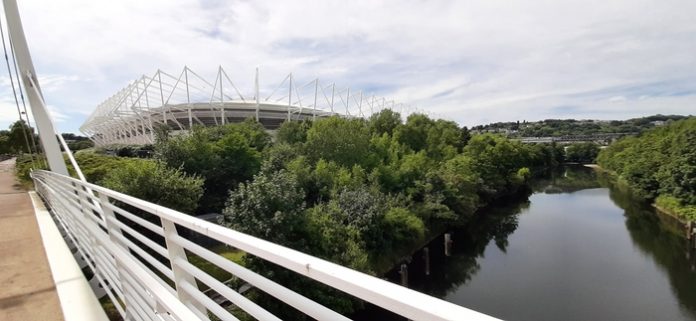Only 60 years ago part of the Lower Swansea Valley was a post-industrial wasteland.
Generations of heavy industry had scarred the area around the River Tawe with industrial dereliction.
Few people had any reason to go there – so change was needed.
That’s why Swansea councillors at the time drew up momentous plans to give the area a bright future – and, in partnership with others, began to deliver them.
Now, people live there in desirable locations such as the Copper Quarter, watch the Swans, Ospreys and world-class concerts at a state-of-the-art stadium, ride and walk through beautiful woodlands, shop at stores such as Morrisons and B&Q – and do lots of business there.
And today’s councillors want to continue this remarkable success story.
Welsh drinks brand Penderyn is preparing to open a distillery and visitor centre at the former Hafod-Morfa Copperworks, more cycle and walking routes are planned and a river pontoon is slated for boat trips and other activities.
World-renowned developer Urban Splash is considering how best to develop the site of the former St Thomas railway station and Swansea Council is in on-going discussions with Skyline Enterprises, who are proposing an adrenalin-fuelled visitor attraction at Kilvey Hill.
Other improvements are also planned.
Council cabinet member Robert Francis-Davies said: “In the past few decades our local councils and their partners have transformed the Lower Swansea Valley from a forbidding no-go site to an economic driving force, a site of great biodiversity and an important leisure destination.
“We want to take it to the next level – by bringing new attractions and opening up the river corridor to more business and work, more nature and more leisure opportunities.”
Council leader Rob Stewart said: “There’ll be plenty of public consultation to come on plans such as Skyline. We want to conserve and improve the greenery on Kilvey Hill – and there’ll be no cable cars going over peoples’ homes.
“We’re conserving and celebrating our history as well as bringing exciting improvements for local people and visitors.”
Key to this – as in the past – will be the securing of funding from a variety of sources.
Council officers are working on this already.
Our images show how the area was as a virtual wasteland in the 1960s, how it evolved, how it looks now – and what it could look like in the near future.
In 1961 a South Wales Evening Post front page lead story began: “Tackling the eyesore at Landore: First practical step to restoring to use the devastated acres on the eastern approach to Swansea was announced today.”
Further practical steps are now being taken to give this historic part of Swansea a big future.
Let us know what you think the best improvements have been since the 1960s!



















